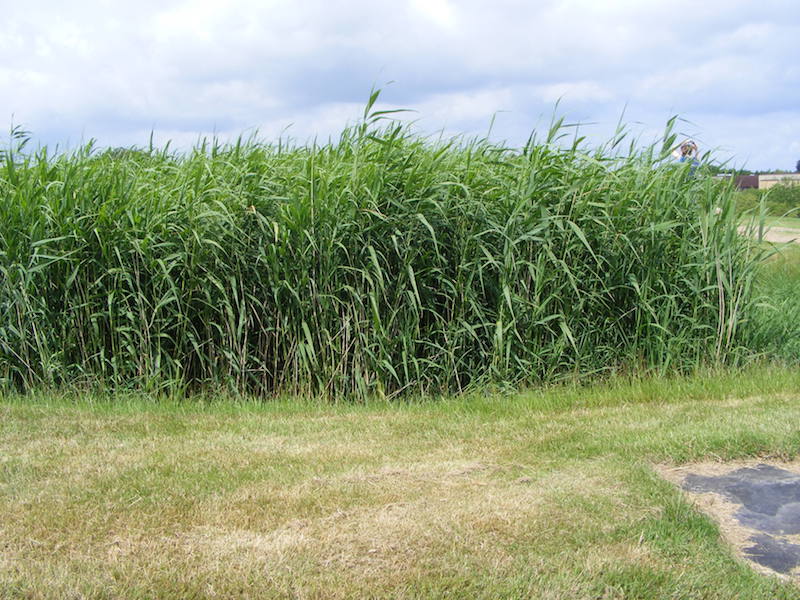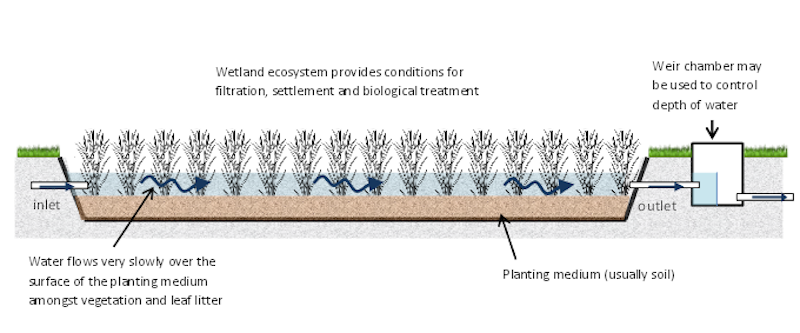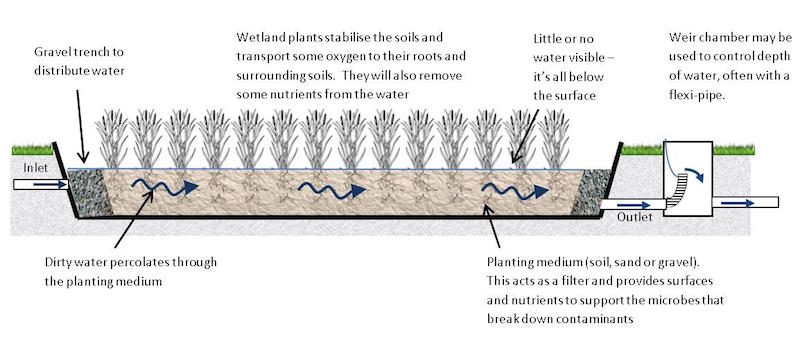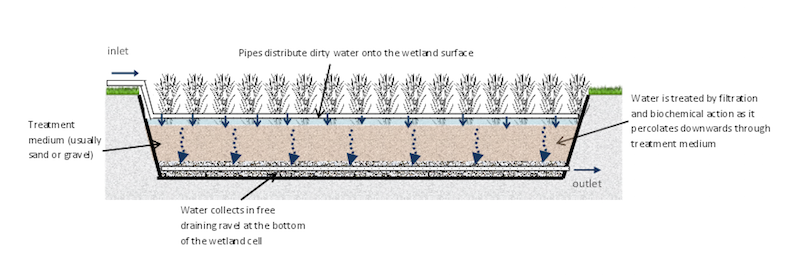
There are all kinds of reasons why wetlands are great! They look beautiful and they are excellent wildlife habitat, but they also remove pollutants from the water environment.
Wetlands clean up water with natural physical, chemical and biological processes. With an understanding of these processes, we can design wetlands to become natural treatment systems, and this is the reason that Wetland Engineering exists.
For all his career, Geoff has been involved with the science of designing wetlands for particular treatment goals, and has been “immersed” in more types of dirty water than you would care to imagine.
The design of a treatment wetland will be specific to the type of contaminants and the amount of water that needs to be cleaned. Different wetland processes remove different contaminants, some contaminants are removed best when there is plenty of oxygen, some when there is little or no oxygen. The materials and shape of the wetland can make a difference to their efficiency.
Types of treatment wetland
Wetland treatment systems vary in design, depending upon the site, the type of effluent and the standard of treatment needed. Sometimes a single wetland will be sufficient to treat the water. Sometimes it is best to use multiple stages of treatment, or to pre-treat or post-treat effluent using other technologies. There are many possible variations upon wetland design, and the jargon can be confusing…A few of the main themes of wetland design are described below.
Passive Treatment Wetlands
It will often be preferable to design a wetland treatment system to operate without a power source - that way there is very little that can go wrong with them, and cost of maintenance will be minimal. Wetland designers describe different designs based upon the path that water takes through the wetland.

'Free Water Surface' or 'Surface Flow' Wetlands
This type of wetland operates in a very naturalistic way. Shallow water is allowed to flow slowly through a bed of wetland plants. Treatment is achieved through the physical processes of filtration and settlement, and through the microbiology that becomes established on …

'Horizontal Sub-surface Flow' (HSSF) Wetlands
These wetlands are planted in a porous medium, typically soil, sand or gravel. They are designed to allow effluent to stay below the surface of the soil, so that it is treated by physical, biological and chemical processes supported by …

'Vertical Flow' (VF) Wetlands
Vertical flow wetlands are quite a different design approach, in which water is applied to the top of the wetland. It percolates downwards through the planting medium, and is collected at the bottom. In some designs, the medium is designed …
Intensified Wetlands
It is also possible to intensify the performance of wetlands with mechanical or chemical processes, to achieve good treatment with a much smaller sizer of wetland. The operating cost is likely to be higher than passive wetlands as a result. A few of the options are considered below:
Reactive media wetlands
These are wetlands with special media that are chosen to have chemical properties that will react with the water to achieve particular treatment outcomes. Common examples are media to react with soluble phosphorous to form insoluble metal phosphates, or media …
Reciprocating wetlands
These are sometimes called "tidal flow" wetlands, or "fill and drain" wetlands. This is an ingenious technology that can achieve a remarkable standard of treatment and can even be made to work by gravity on some sites. Two or more …
Aerated wetlands
Air is pumped into the base of (typically) a horizontal subsurface flow wetland by means of an air compressor. These are very effective at reducing the "oxygen demand" amd eliminating ammonia from watewaters. Electrical power is needed to power the compressors, though it …